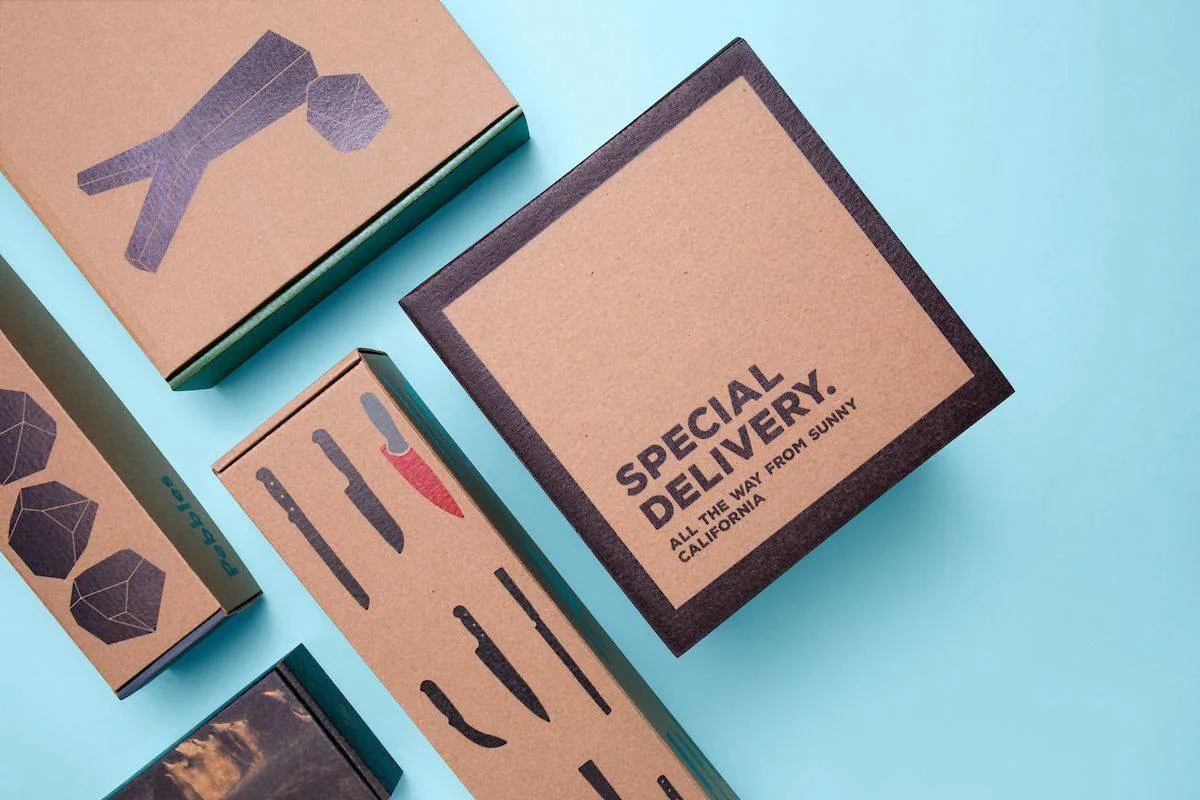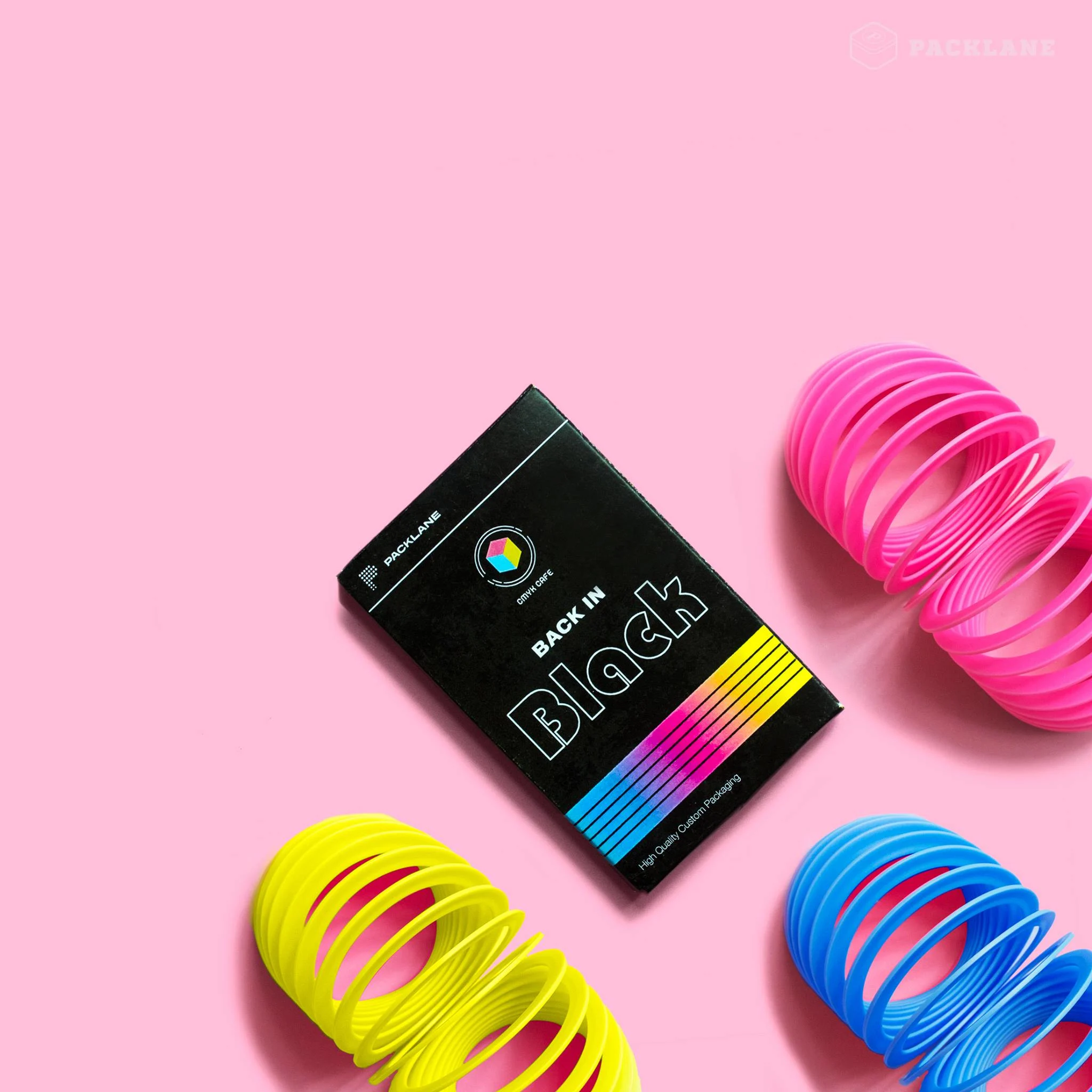Telling a Story With Packaging
- 8 August 2017
- ByPacklane
- 9 min read

Thanks to print on demand services, it’s becoming even easier to create packaging that really turns heads. Let Helen Scott, a creative writer at Packlane, walk you through the finer details of what makes great packaging.
When starting a new business, designing packaging for your products might not be at the top of your to-do list. Because it’s what’s inside that counts, right?

Credit: Packlane and Olga Tkachenko
Well, sort of. Shoppers buy products based on their desire for the product itself, sure, but the quality of the packaging can start things off on the right foot. It’s often the first thing they’ll see and touch on the way to establishing a lasting relationship with your brand. Whether it’s through immediate attraction on a shop shelf, a post-purchase glow as you swing a shopping bag off your arm, or through that ‘wow’ moment when you open up an online purchase, most customers engage with your product first and foremost through packaging.
Why packaging is so important
Cast your mind back to the days before Instagram. When you bought a product, did other people know about it? Perhaps you showed it to a few friends or family members. But with social media platforms like Instagram and Pinterest, potential audiences for every single purchase has ballooned - now you might share the thrill of opening a new package with dozens, hundreds, thousands of followers.
For a growing business, this opens up completely new and exciting avenues for brand promotion. The design appeal of packaging plays a vital part in how you stand out. Consider great packaging design the quickest route to easy advertising - satisfied shoppers will want to share your designs with others, allowing you to reach out to new customers with very little effort.
Packaging as a promotional tool post-purchase is even more important when you consider how many customers prefer to buy online, using the brand’s website, product shots, and social media chatter as the deciding factors for making a purchase. The nature of online shopping is such that while the customer waits for their product to arrive they might ‘go cold’ or even forget they placed an order - beautiful packaging design is an opportunity to persuade the customer that they made a good choice.
Print-on-demand technology also lessens your environmental impact, allowing you to create beautiful designs that are recyclable or reusable. Some brands even design packaging that doubles as an integral part of the product or is simply too beautiful or luxurious to throw away. Thoughtfulness in packaging extends its value and holds the potential to connect the customer with the brand each time they use it.

Credit: Packlane and Mr. Dog
Leave a lasting impression with design
Design is the real key to connecting with customers on an emotional and aesthetic level. A beautifully designed package can be lovingly photographed and posted to Instagram, fawned over by admiring friends, or left as an envy-inducing trophy piece on someone’s desk or kitchen counter. Packaging design also says a lot about your standing as a business - if you’re aiming at the luxury market, for example, your boxes and bags should have design features to reinforce this brand position, such as weighty, substantial materials or metallic foiling; little touches that remind the customer of their wise investment.
The building blocks of great packaging design aren’t complicated - fonts, colors, and images that match your brand are a great start. But if you need help, don’t be afraid to hire a designer to lend a hand with the finer touches. Seemingly small details, like opting for coated or natural paper stock, UV gloss coatings, or metallic stamping, can drastically alter the tactile impact of your design when a new customer touches it for the first time.

Credit: Packlane
At the design stage, it’s also a great opportunity for you to channel all the enthusiasm and love you feel for your brand and put it all onto a box. This is the place where customers often want to know more about your brand story, and it’s one of the few times when they’re completely receptive to it. Having purchased your product, they’re already engaged - take advantage of their attention and make customer testimonials or personal touches like handwritten notes, photos, or signatures a key part of the design. Customers will appreciate the authenticity. You can also take a cue from one of the oldest packaging strategies in the book - just as cereal boxes have featured crossword puzzles and games for decades, you too can use your packaging to give your customers something extra, whether it’s coloring activities to accompany kids’ products or recipe suggestions on food items.
If this seems like a lot, don’t get overwhelmed! You can have great fun crafting packaging that does justice to the products inside. With a little bit of support from a friendly designer or a company like Packlane (try the handy FAQ page for all sorts of guidance, from what software to use to design your packaging to how to export your artwork for printing), this can be one of the most enjoyable and exciting aspects of setting up your business.
Retain customers with a kick-ass packaging strategy
Once you’ve received your beautifully designed boxes back from the printer, it’s tempting to kick back and relax. But your packaging efforts don’t end there. How the customer receives your packaging is just as important as how it looks, and your shipping strategy has a big part to play in overall customer satisfaction.
While you probably hand over shipment to another company, with good reason, this is nonetheless the only physical interaction a customer may have with your brand. A cheap shipment strategy might save a few bucks up front, but your customer might be on the receiving end of a late or damaged delivery.
You can take simple steps to ensure your thoughtfully designed packaging arrives efficiently and is received with a smile. If you can afford to offer free shipping as standard or over a certain spending threshold, that’s great! But I’d recommend prioritizing the quality and reputation of the shipment company over “free” if necessary. It might cost more to use well-known shipping companies, especially if you sell higher priced goods and need to spring for shipping insurance, but the peace of mind is often worth it. If needed, you can add the cost of shipping into your product’s price, rather than adding it as a separate charge.
If a blanket “free shipping” policy is too much, coupon codes and occasional shipping discounts can be more affordable and temporary strategies for giving customers the sense you are rewarding their interest in your brand. Give ‘em a heads up on social media and you’ll have the added benefit of generating anticipation and excitement in the run-up to deals.
Dealing with dissatisfied customers efficiently and fairly is also incredibly important. Offering free returns - and advertising this clearly on your site - will reassure customers who are on the fence about purchasing. You can also make returning items easy for customers by providing clear instructions right on the packing slip. Don’t think of shipping complaints as being the sole responsibility of the postal company (even if your business agreement says otherwise) and communicate this to the customer - it’s much better to deal with delivery complaints directly and help the customer to find a resolution with the shipment company, because it ultimately reflects back on you. That extra attention to detail can come to define your reputation online, for better or worse.
To limit damage to products in transit, consider adding filler materials to your packaging. In addition to being that extra bit of insurance for your product, you can also reduce your carbon footprint by using mushroom fillers or degradable hardwood strands. Communicate to the recipient what it is and why you’ve taken the extra step - they’ll appreciate the effort. You can also add a ‘lucky dip’ surprise element to your packaging by including discount codes, free shipping coupons, or even miniature product samples, which can lead to future purchases.
It’s more than a box
Packaging is more than functional - it’s a key way to engage with your customers on an emotional level and it’s a fantastic platform for communicating your brand message. Whether you’re looking to connect with a larger customer base through Instagrammable packaging designs or to forge lasting connections with existing customers, you can’t underestimate the power of presentation.
- Share